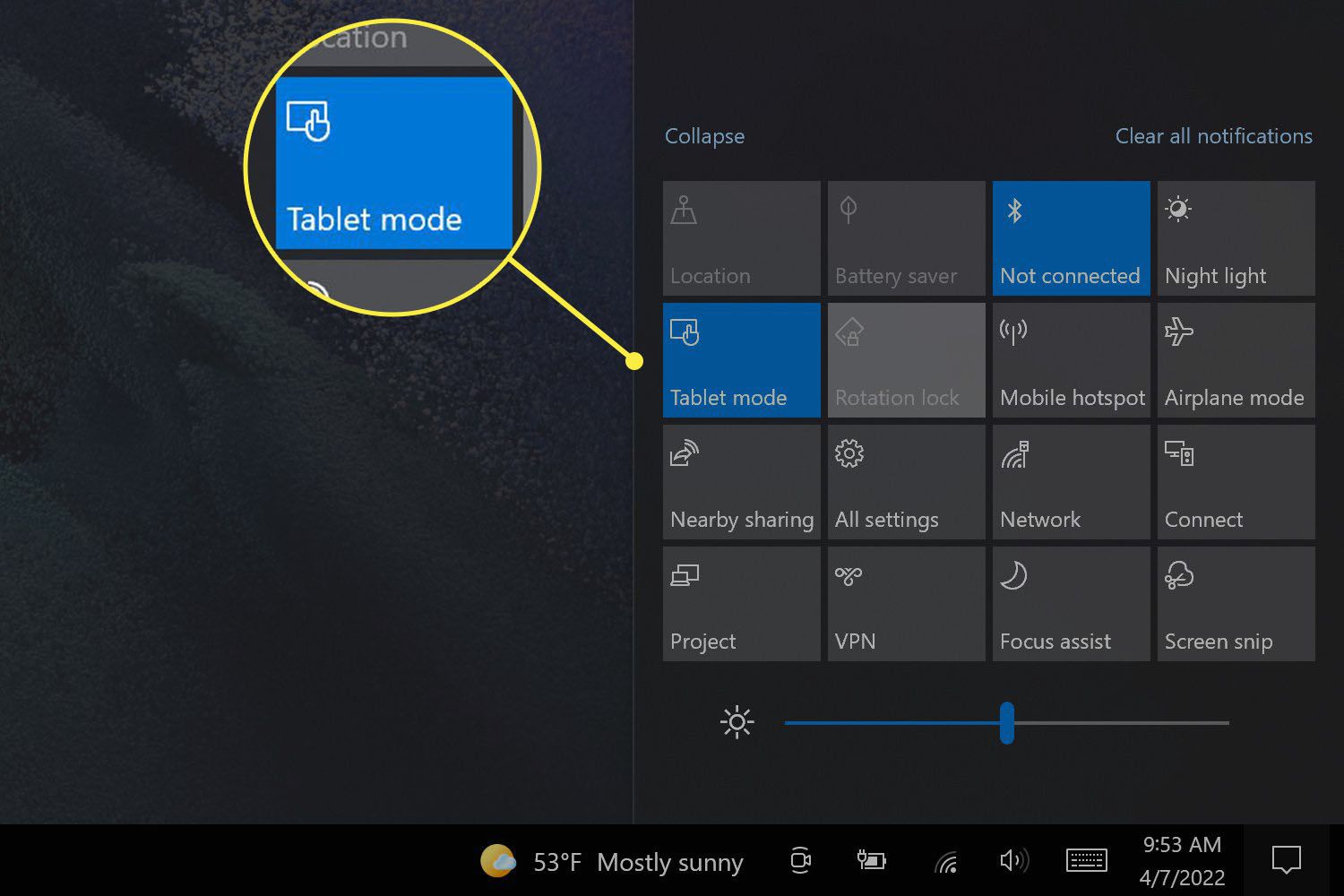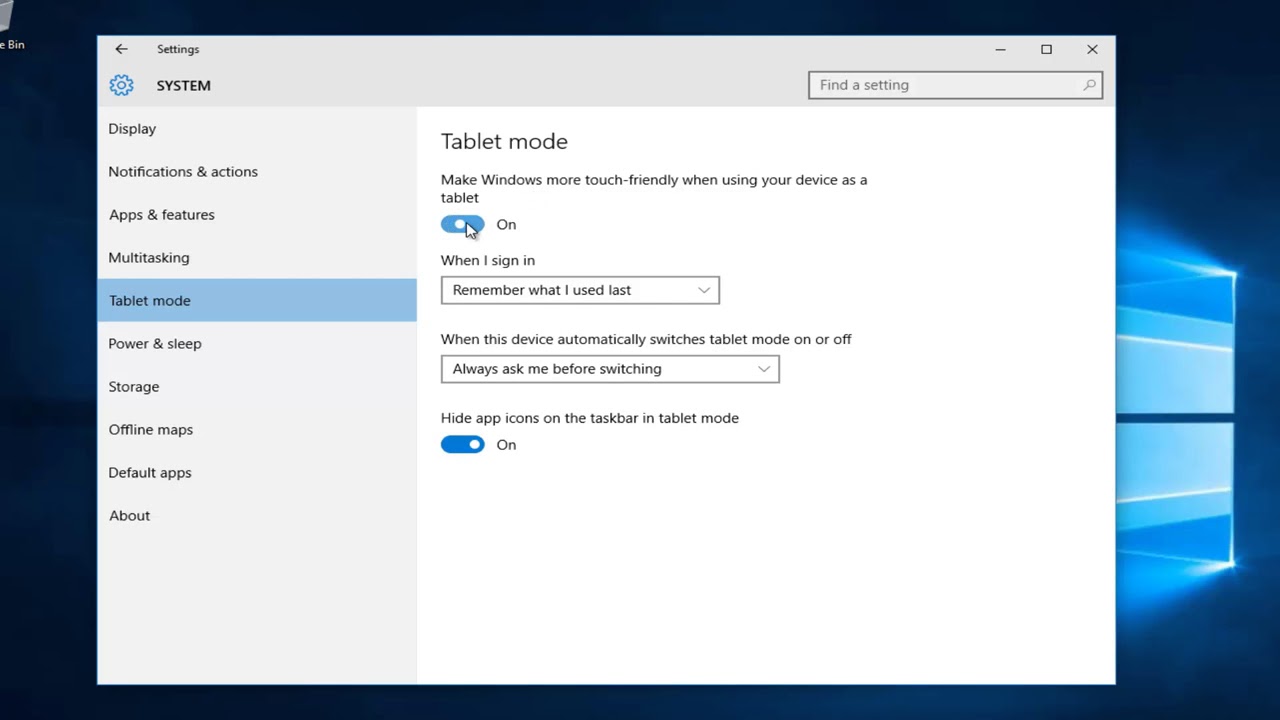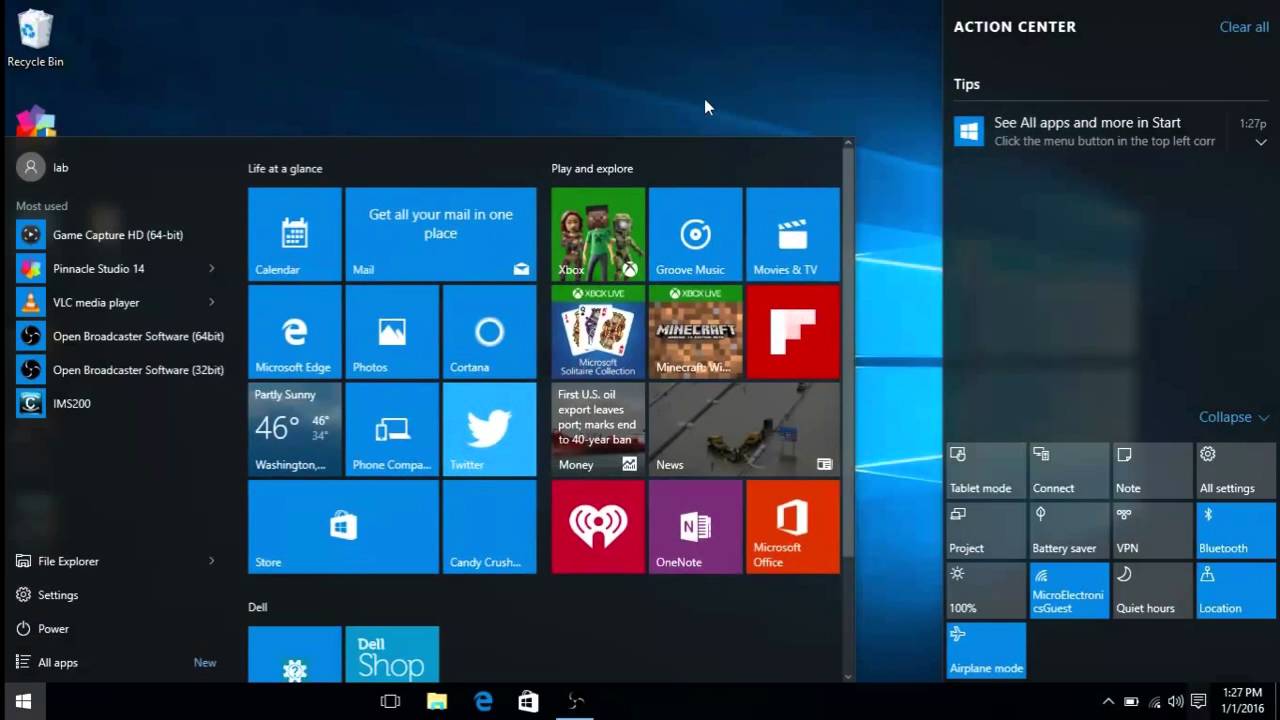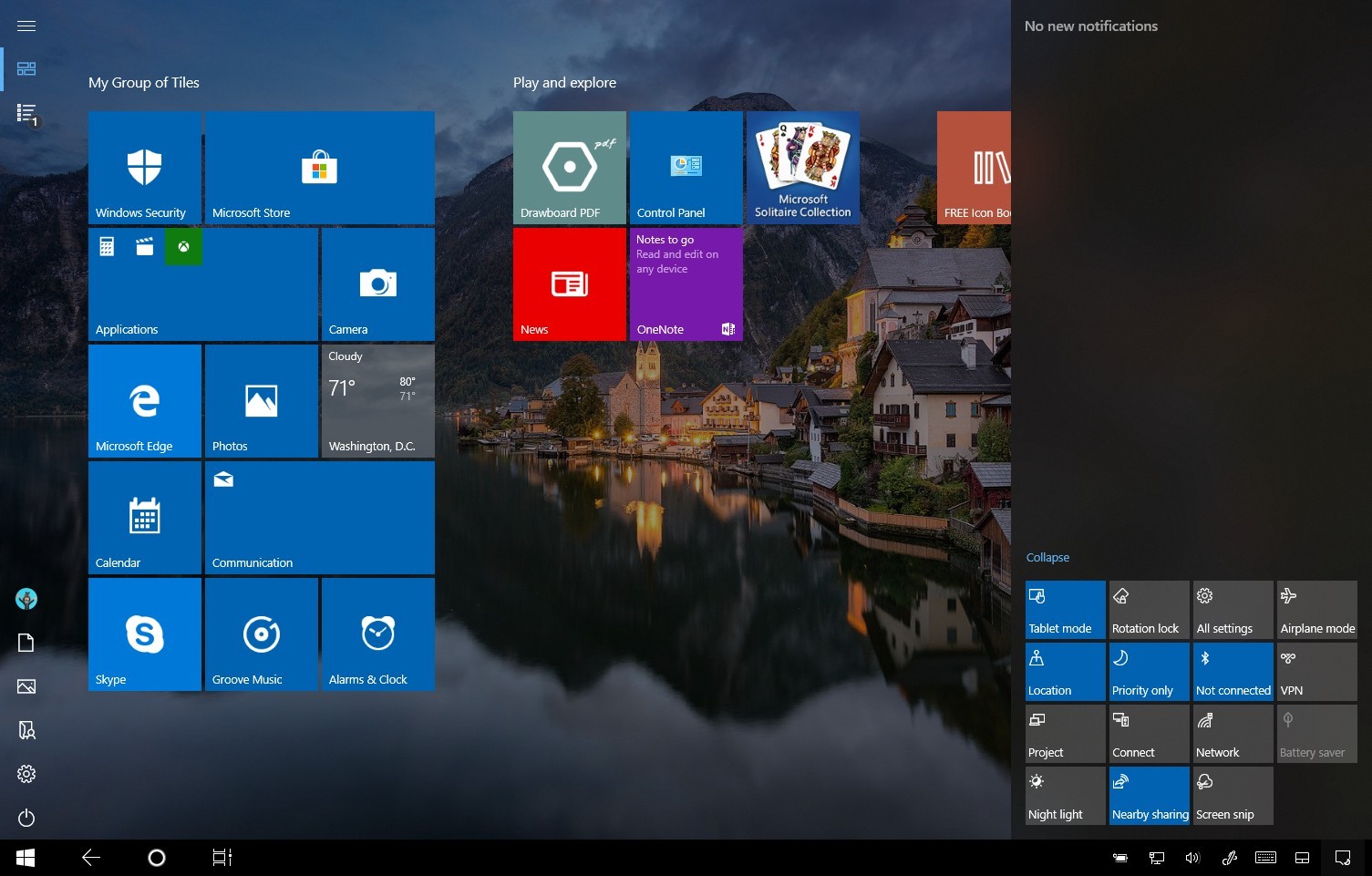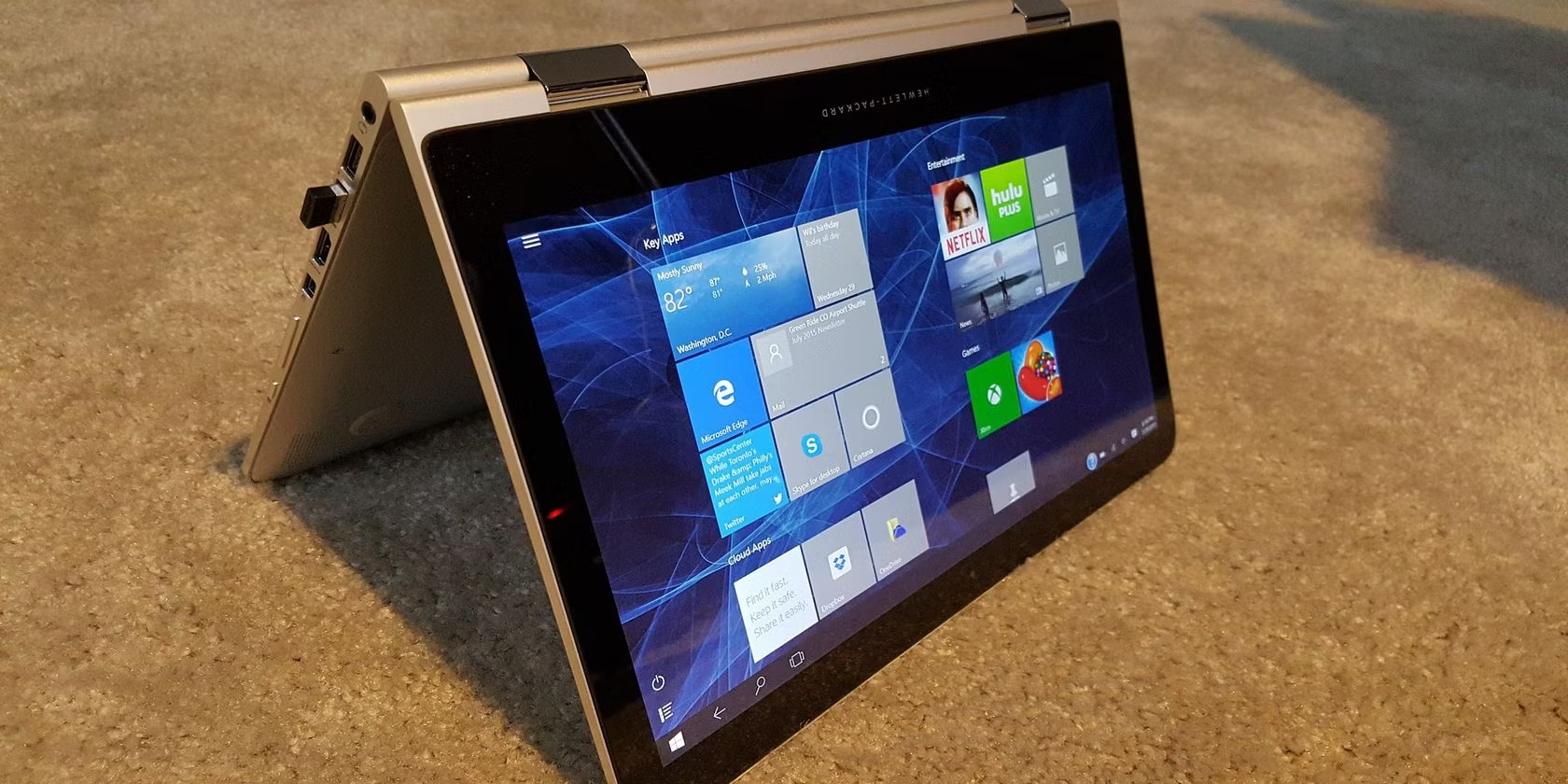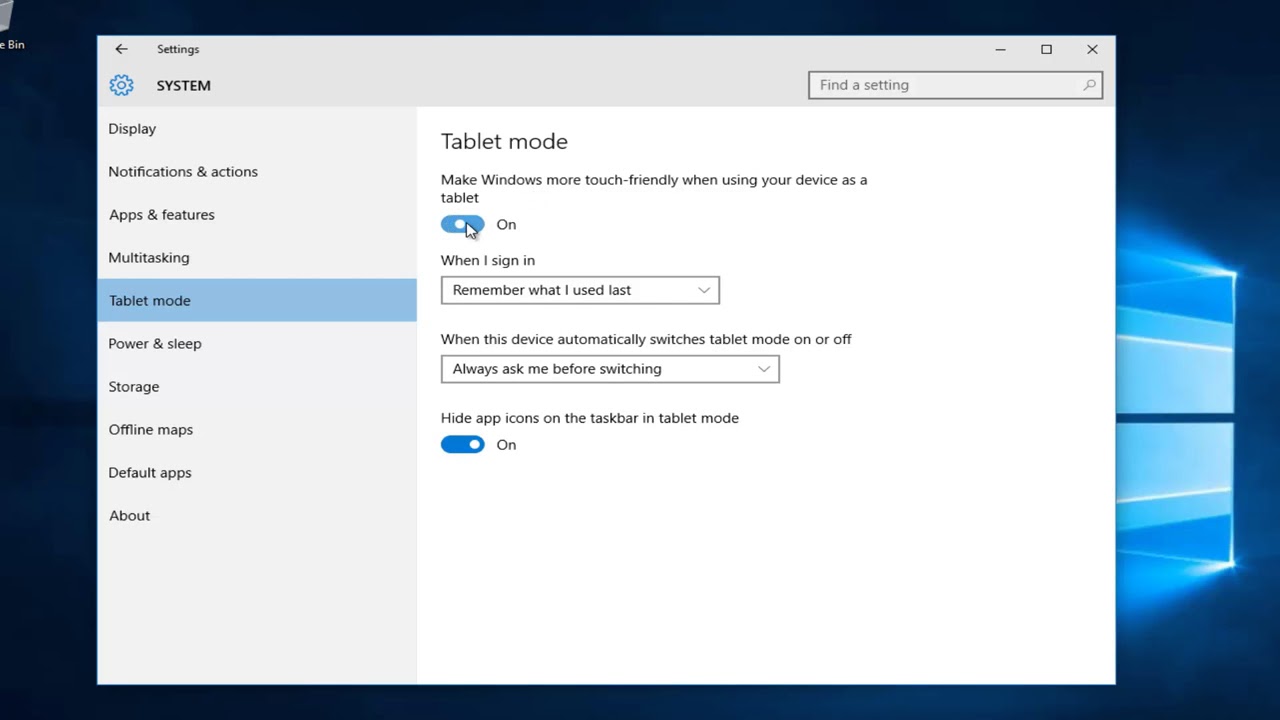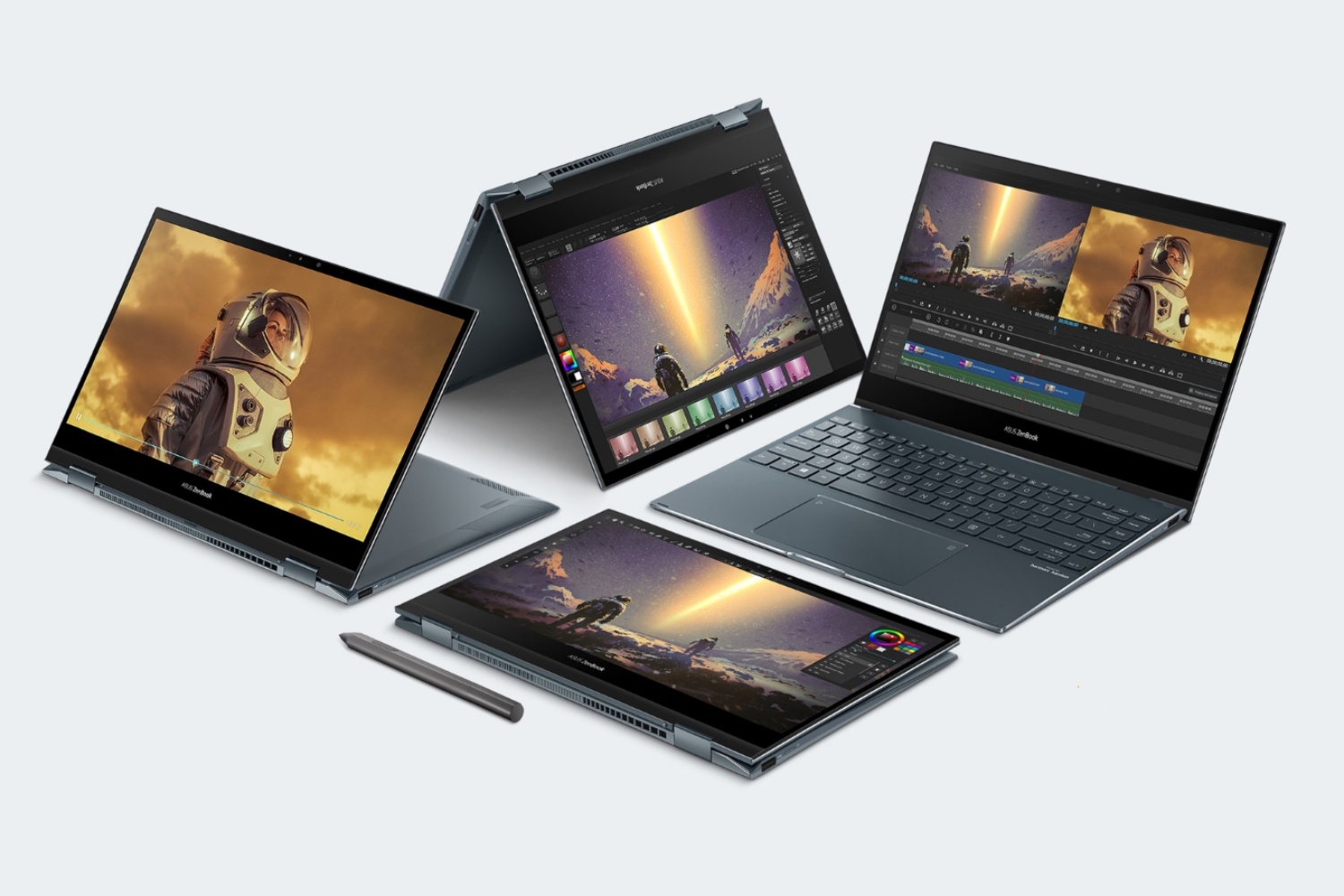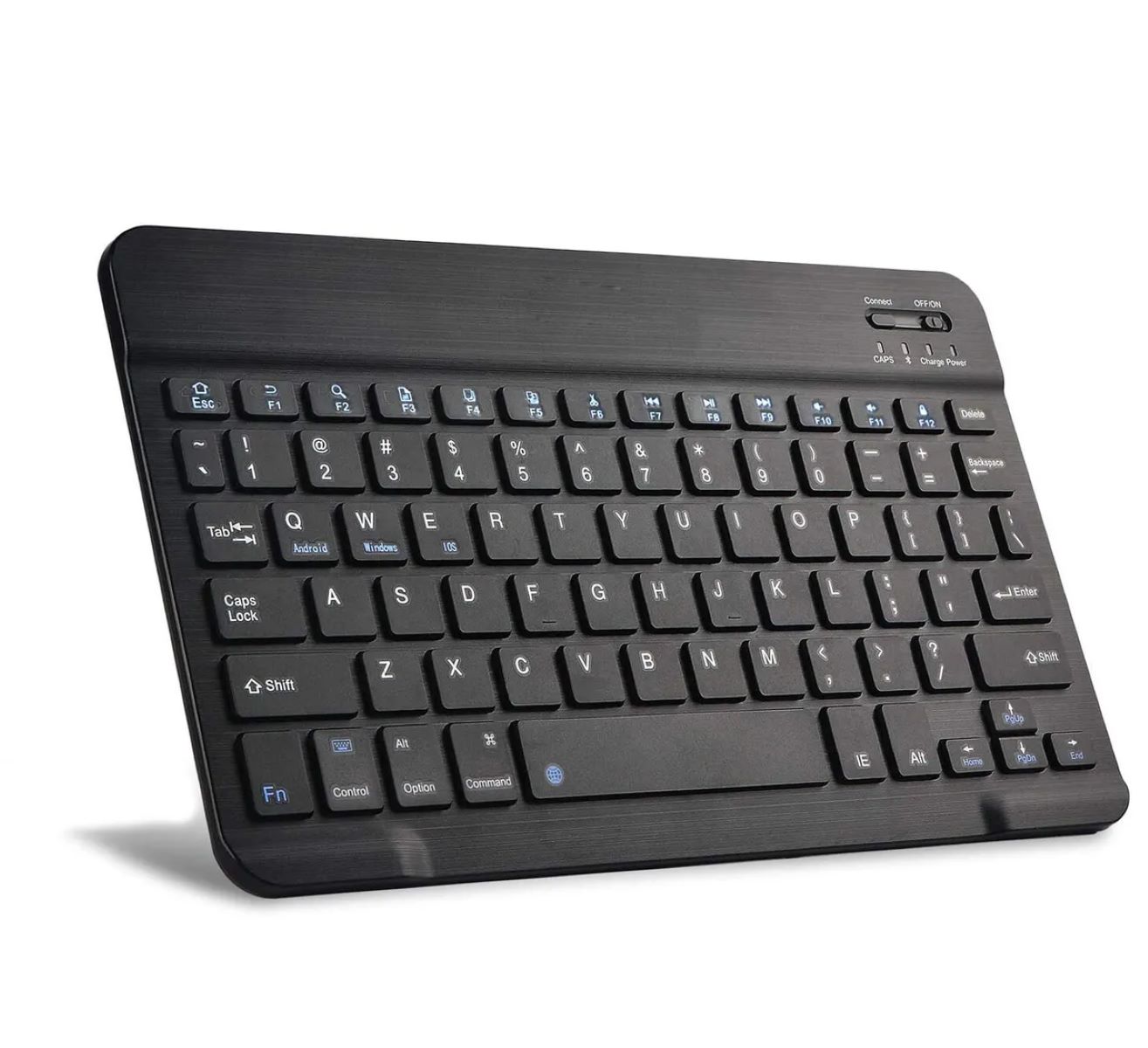Introduction
When it comes to versatility, Windows 10 offers a remarkable feature known as Tablet Mode. This mode allows you to transform your traditional laptop or desktop computer into a tablet-like interface, offering a more immersive and touch-friendly experience. Whether you have a touchscreen device or prefer to use a keyboard and mouse, Tablet Mode can enhance your productivity and make navigating through Windows 10 a breeze.
In Tablet Mode, the Windows 10 interface is optimized to provide a more streamlined experience for touch-based input. This means that apps and menus are enlarged, making them easier to interact with using your fingers or a compatible stylus. Tablet Mode also introduces a different layout and navigation system, making it ideal for users who prefer a more intuitive and mobile-friendly interface.
In this article, we will guide you through the process of enabling Tablet Mode, using it on touchscreen devices, customizing its settings, and switching back to the familiar desktop mode when needed. Whether you are a casual user looking for a more immersive experience or a power user who wants to take full advantage of Windows 10’s touch capabilities, Tablet Mode can greatly enhance your computing experience.
So, grab your device and let’s dive into the world of Tablet Mode in Windows 10!
What is Tablet Mode?
Tablet Mode is a feature in Windows 10 that optimizes the operating system for touch-based interaction. It essentially transforms your computer into a more tablet-like interface, making it easier to navigate and interact with apps and content using touch gestures. Tablet Mode is particularly useful for devices with touchscreens, such as tablets, 2-in-1 laptops, and convertibles, but it can also be used with a keyboard and mouse.
In Tablet Mode, the Start menu and desktop icons are hidden, and the user interface is optimized for touch input. The layout and spacing of icons, buttons, and menus are adjusted to be larger and more finger-friendly. This makes it easier to tap and swipe through the interface, improving usability for touch-based interactions.
When you enable Tablet Mode, you’ll notice that apps open in full screen by default, allowing you to focus on the task at hand without distractions. The Start menu is replaced by the Start screen, which displays a grid of your installed apps in a touch-friendly layout. You can easily launch apps or switch between them by swiping or tapping on the screen.
Additionally, Tablet Mode supports gestures like swiping in from the sides to access the Action Center, swiping down from the top to close apps, and swiping up from the bottom to access the taskbar or app commands. These gestures provide a more intuitive way to interact with your device and enhance the overall touchscreen experience.
It’s important to note that Tablet Mode is not limited to touchscreen devices. If you have a non-touchscreen device, you can still enable Tablet Mode and use it with a keyboard and mouse. While you won’t have the same touch-based interactions, the user interface will still be optimized for a more immersive and fluid experience.
Whether you’re using a tablet, a 2-in-1 laptop, or a traditional desktop with a keyboard and mouse, Tablet Mode can provide a more seamless and touch-friendly experience. So, if you’re looking to enhance your productivity or simply enjoy a more immersive interface, Tablet Mode in Windows 10 is definitely worth exploring.
How to Enable Tablet Mode
Enabling Tablet Mode in Windows 10 is a simple process that can be done in just a few steps. Here’s how you can enable Tablet Mode on your device:
- Click on the “Action Center” icon located in the bottom-right corner of the taskbar. Alternatively, you can use the keyboard shortcut “Windows key + A” to open the Action Center.
- In the Action Center, you will see a variety of quick settings icons. Look for the “Tablet Mode” icon, which resembles a square with a pen on it. Click on it to enable Tablet Mode.
- Once enabled, the user interface will switch to Tablet Mode. The Start menu and desktop icons will be hidden, and apps will open in full screen by default. You can now enjoy the touch-friendly interface and enhanced usability offered by Tablet Mode.
If you prefer using touch gestures to quickly enable or disable Tablet Mode, Windows 10 provides an option for that as well. Here’s how to do it:
- Swipe in from the right edge of the screen to open the Action Center. If you’re using a non-touchscreen device, you can also access the Action Center by clicking on the “Notification Center” icon in the bottom-right corner of the taskbar.
- In the Action Center, look for the “Tablet Mode” quick setting. Tap on it to toggle Tablet Mode on or off.
- When Tablet Mode is enabled, the user interface will adapt to a touch-friendly layout, and you can start using your device in Tablet Mode. To switch back to the desktop mode, simply follow the same steps and disable Tablet Mode.
Enabling Tablet Mode in Windows 10 allows you to experience a more streamlined and touch-friendly interface, regardless of whether you’re using a touchscreen device or a keyboard and mouse. It’s a convenient feature that enhances your overall user experience and makes navigating through Windows 10 a breeze.
Using Tablet Mode on Touchscreen Devices
Tablet Mode in Windows 10 is specifically designed to enhance the usability of touchscreen devices, making it easier and more intuitive to interact with apps and navigate the interface. If you’re using a device with a touchscreen, here are some key features and tips for using Tablet Mode:
- Launch and switch between apps: In Tablet Mode, apps open in full screen by default, making it easier to focus on one app at a time. To switch between open apps, simply swipe from the left side of the screen. You can use this gesture to quickly switch back and forth between your recently used apps.
- Access the Start screen: The Start menu is replaced by the Start screen in Tablet Mode. To access the Start screen, simply tap on the Windows icon located in the taskbar or swipe up from the bottom of the screen. From the Start screen, you can launch apps, access settings, and perform various tasks.
- Use touch gestures: Windows 10 supports a variety of touch gestures in Tablet Mode. For example, you can swipe in from the right edge of the screen to open the Action Center, swipe down from the top of the screen to close an app, or swipe up from the bottom of the screen to access the taskbar or app commands. These gestures make it easy to navigate and interact with your device in a touch-friendly manner.
- Virtual keyboard: When using Tablet Mode, you may need to type using the on-screen keyboard. To open the keyboard, simply tap on a text field, and it will automatically appear. You can also manually open the keyboard by clicking on the keyboard icon located in the taskbar. The virtual keyboard provides a convenient way to type on touchscreen devices without the need for an external physical keyboard.
- Task View and virtual desktops: Tablet Mode also includes the Task View feature, which allows you to switch between virtual desktops. You can access the Task View by swiping up from the taskbar or pressing the “Windows key + Tab” keyboard shortcut. This feature is particularly useful for multitasking and organizing your open apps across different virtual desktops.
Using Tablet Mode on touchscreen devices can greatly enhance your user experience, providing a more fluid and intuitive environment for interaction. Whether you’re browsing the web, working on documents, or enjoying multimedia content, Tablet Mode ensures that your device is optimized for touch-based input, making it a pleasure to use.
Navigating in Tablet Mode
Tablet Mode in Windows 10 introduces a different navigation system compared to the traditional desktop mode. Whether you’re using a touchscreen device or a keyboard and mouse, here are some key navigation tips to help you get around in Tablet Mode:
- Start screen and app tiles: In Tablet Mode, the Start menu is replaced by the Start screen, which displays app tiles in a touch-friendly layout. To open an app, simply tap on its tile. You can customize the arrangement and size of app tiles by right-clicking on them and selecting the desired option from the context menu.
- Swipe gestures: Swipe gestures are a key part of navigating in Tablet Mode. If you’re using a touchscreen device, you can swipe from the left edge of the screen to switch between open apps. To access the Action Center, swipe in from the right edge of the screen. Swiping down from the top edge of the screen will close the current app, and swiping up from the bottom edge of the screen will reveal the taskbar or app commands.
- Taskbar: The taskbar in Tablet Mode works similarly to the desktop mode. It is hidden by default but can be accessed by swiping up from the bottom edge of the screen or tapping on the taskbar icon. The taskbar allows you to switch between open apps, access the Start screen, open the Action Center, and interact with other system icons.
- Task View and virtual desktops: Tablet Mode retains the Task View feature, which allows you to view and switch between your open apps and virtual desktops. You can access Task View by swiping up from the taskbar or pressing the “Windows key + Tab” keyboard shortcut. This feature is especially useful for multitasking and organizing your workspace.
- Virtual keyboard: If you’re using a touchscreen device and need to input text, the virtual keyboard will automatically appear when you tap on a text field. It provides a convenient way to type on your device without the need for an external physical keyboard. You can also manually open the virtual keyboard by clicking on the keyboard icon in the taskbar.
By familiarizing yourself with these navigation tips, you’ll be able to effortlessly navigate through Windows 10 in Tablet Mode. Whether you’re working on multiple tasks, accessing the Start screen, or switching between apps, Tablet Mode offers a touch-friendly and intuitive environment for seamless interaction.
Customizing Tablet Mode Settings
Windows 10 provides several customizable options for Tablet Mode, allowing you to tailor the experience to your preferences. Here are some settings you can adjust to optimize Tablet Mode:
- Auto-hide the taskbar: By default, the taskbar is automatically hidden in Tablet Mode to provide a more immersive experience. However, you can choose to keep the taskbar always visible in Tablet Mode. To change this setting, right-click on the taskbar, select “Taskbar settings,” and toggle the “Automatically hide the taskbar in tablet mode” switch.
- Choose which notifications appear on the lock screen: In Tablet Mode, you might want to control which notifications are displayed on the lock screen. To customize this, go to Settings > System > Notifications & actions. Under the “Notifications” section, click on “Customize your notification settings,” and then choose which apps are allowed to show notifications on the lock screen.
- Adjust tablet mode behavior: Windows 10 allows you to fine-tune the behavior of Tablet Mode. To do this, go to Settings > System > Tablet mode. Here, you can choose how Windows should switch in and out of Tablet Mode, whether it should prompt you to switch or do it automatically based on your device’s settings.
- Customize app behaviors in Tablet Mode: Some apps behave differently in Tablet Mode. To customize how apps open and close, go to Settings > System > Tablet mode and scroll down to the “When I sign in” section. Here, you can choose whether apps should open in full screen or tablet mode when you sign in or when you snap them.
- Default app settings: If you prefer certain apps to always open in Tablet Mode, you can modify the default app settings. Go to Settings > Apps > Default apps, and select the app category you want to modify (e.g., web browser, email client). Choose the app you prefer to open in Tablet Mode, and it will be set as the default app for that category.
These are just a few examples of the customization options available for Tablet Mode in Windows 10. By tweaking these settings to align with your preferences, you can create a personalized and optimized Tablet Mode experience that suits your needs.
Switching Back to Desktop Mode
While Tablet Mode in Windows 10 offers a touch-friendly and immersive experience, there may be times when you need to switch back to the traditional desktop mode. Whether you’re using a touchscreen device or a keyboard and mouse, here’s how you can easily switch back to desktop mode:
- Using the Action Center: To switch back to desktop mode, open the Action Center by clicking on the “Action Center” icon in the bottom-right corner of the taskbar or by using the keyboard shortcut “Windows key + A”. In the Action Center, click on the “Tablet Mode” icon to turn it off. The user interface will revert to the desktop mode.
- Using touch gestures: If you’re using a touchscreen device, you can also use touch gestures to switch back to desktop mode. Swipe in from the right edge of the screen to open the Action Center and tap on the “Tablet Mode” quick setting to toggle it off.
- Using the Start menu: Another way to switch back to desktop mode is through the Start menu. If you see the Start screen in Tablet Mode, click on the Windows icon located in the taskbar to open the Start menu. From the Start menu, you can access the “Settings” option and navigate to the “System” category. In the “System” settings, select “Tablet mode” and toggle it off.
- Keyboard shortcut: If you prefer using keyboard shortcuts, you can quickly switch back to desktop mode by pressing the “Windows key + A” to open the Action Center, and then pressing the “Enter” key to toggle off Tablet Mode.
Switching back to desktop mode allows you to access the traditional desktop environment and its features. You’ll have access to the familiar Start menu, desktop icons, taskbar, and multitasking capabilities. Whether you need to use productivity apps, work with multiple windows, or perform more advanced tasks, the desktop mode provides a versatile and efficient workspace.
Remember, you can switch back and forth between Tablet Mode and desktop mode as needed, depending on your device and personal preferences. This flexibility ensures that you can enjoy the best of both worlds and choose the interface that suits your workflow and tasks at any given time.
Conclusion
Tablet Mode in Windows 10 offers a versatile and touch-friendly interface that enhances your computing experience, whether you’re using a touchscreen device or a keyboard and mouse. By enabling Tablet Mode, you can enjoy a more immersive and intuitive user interface, with apps optimized for touch-based interaction.
In this article, we explored what Tablet Mode is and how to enable it on your device. We discussed the features and navigation tips for using Tablet Mode on touchscreen devices, as well as customizing its settings to suit your preferences. Additionally, we learned how to easily switch back to the traditional desktop mode when needed.
Tablet Mode provides a streamlined experience for tasks that benefit from touch-based input, such as browsing the web, using apps, and consuming multimedia content. It offers a larger, finger-friendly layout, and supports intuitive touch gestures that enhance your productivity and enjoyment.
Whether you have a tablet, a 2-in-1 laptop, or a traditional desktop, Tablet Mode in Windows 10 can transform your device into a more interactive and versatile platform. It’s a powerful feature that adapts to your needs, allowing you to seamlessly switch between touch and desktop modes based on your workflow.
So, whether you’re a casual user looking for a more intuitive interface or a power user wanting to take advantage of touch capabilities, Tablet Mode in Windows 10 is definitely worth exploring. Give it a try and experience a whole new level of usability and convenience!







